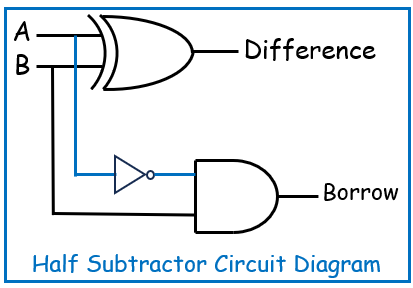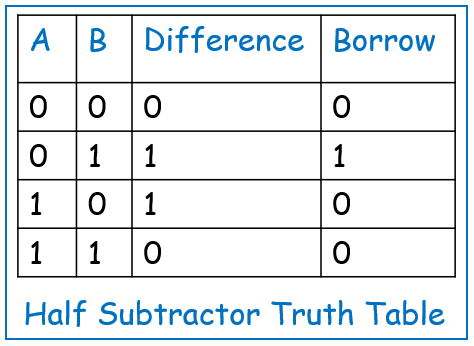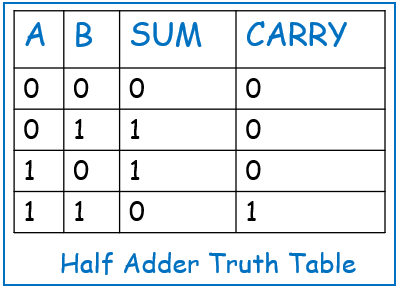1] Comments
In Verilog, comments are used to document and explain the code. There are two types of comments:
1. Single-line comments start with // and extend until the end of the line. They are used for short explanations or notes.
// This is a single-line comment
always @(posedge clk) begin
// Do something here
end
2. Multi-line comments start with /* and end with */. They can span multiple lines and are useful for longer explanations or commenting out blocks of code.
/*
This is a multi-line comment.
It can span multiple lines.
*/
/*
always @(posedge clk) begin
// Code here
end
*/
These comments are not processed by the Verilog compiler and are purely for the benefit of the programmer to improve code readability and understanding.
2] Number Formats
In Verilog, number formats are used to represent numerical values in various formats such as binary, decimal, hexadecimal, octal, and real numbers. Here are examples of each number format in Verilog:
1. Binary Format:
Binary numbers are represented using the b or B prefix followed by a sequence of 0s and 1s.
reg [3:0] binary_num = 4'b1010; // Binary number 1010 (decimal 10)
2. Decimal Format:
Decimal numbers are represented directly without any prefix.
integer decimal_num = 42; // Decimal number 42
3. Hexadecimal Format:
Hexadecimal numbers are represented using the h or H prefix followed by a sequence of hexadecimal digits (0–9 and A-F).
reg [7:0] hex_num = 8'hFF; // Hexadecimal number FF (decimal 255)
4. Octal Format:
Octal numbers are represented using the o or O prefix followed by a sequence of octal digits (0–7).
reg [5:0] octal_num = 6'o17; // Octal number 17 (decimal 15)
5. Real Numbers:
Real numbers are represented using the real data type real or realtime.
real real_num = 3.14; // Real number 3.14
These number formats allow Verilog designers to work with different numerical representations based on their requirements within the hardware description language.
3] VERILOG OPERATORS
Verilog provides a variety of operators for performing arithmetic, logical, bitwise, and other operations. Here are some of the commonly used Verilog operators:
1. Arithmetic Operators:
+ Addition
- Subtraction
* Multiplication
/ Division
% Modulus (Remainder after division)
Example:
reg [3:0] a = 4'b1010;
reg [3:0] b = 4'b0011;
reg [3:0] sum;
reg [3:0] difference;
reg [6:0] product;
reg [3:0] quotient;
reg [3:0] remainder;
assign sum = a + b; // sum = 14 (binary 1110)
assign difference = a — b; // difference = 6 (binary 0110)
assign product = a * b; // product = 33 (binary 100001)
assign quotient = a / b; // quotient = 2 (binary 0010)
assign remainder = a % b; // remainder = 2 (binary 0010)
Explanation:
- sum is calculated as 1010 (binary) + 0011 (binary) = 1110 (binary), which is 14 in decimal.
- difference is calculated as 1010 (binary) — 0011 (binary) = 0110 (binary), which is 6 in decimal.
- product is calculated as 1010 (binary) * 0011 (binary) = 100001 (binary), which is 33 in decimal.
- quotient is calculated as 1010 (binary) / 0011 (binary) = 0010 (binary), which is 2 in decimal.
- remainder is calculated as 1010 (binary) % 0011 (binary) = 0010 (binary), which is 2 in decimal.
- Therefore, the outputs are:
sum: 14 (binary 1110)
difference: 6 (binary 0110)
product: 33 (binary 100001)
quotient: 2 (binary 0010)
remainder: 2 (binary 0010)
2. Relational Operators:
== Equal to
!= Not equal to
> Greater than
< Less than
>= Greater than or equal to
<= Less than or equal to
Examples:
reg [3:0] a = 4'b1010;
reg [3:0] b = 4'b1010;
reg isEqual;
reg notEqual;
reg isGreaterThan;
reg isLessThan;
reg isGreaterThanOrEqual;
reg isLessThanOrEqual;
assign isEqual = (a == b); // isEqual = 1 (true)
assign notEqual = (a != b); // notEqual = 0 (false)
assign isGreaterThan = (a > b); // isGreaterThan = 0 (false)
assign isLessThan = (a < b); // isLessThan = 0 (false)
assign isGreaterThanOrEqual = (a >= b); // isGreaterThanOrEqual = 1 (true)
assign isLessThanOrEqual = (a <= b); // isLessThanOrEqual = 1 (true)
Explanation:
- isEqual is true (1) because a and b are equal (1010 in binary).
- notEqual is false (0) because a and b are equal (1010 in binary).
- isGreaterThan is false (0) because a is not greater than b.
- isLessThan is false (0) because a is not less than b.
- isGreaterThanOrEqual is true (1) because a is equal to b.
- isLessThanOrEqual is true (1) because a is less than or equal to b.
- So, the output values are:
isEqual: 1 (true)
notEqual: 0 (false)
isGreaterThan: 0 (false)
isLessThan: 0 (false)
isGreaterThanOrEqual: 1 (true)
isLessThanOrEqual: 1 (true)
3. Logical Operators:
&& Logical AND
|| Logical OR
! Logical NOT
Example:
reg a = 1'b1;
reg b = 1'b0;
reg andResult;
reg orResult;
reg notA;
assign andResult = (a && b); // andResult = 0 (false)
assign orResult = (a || b); // orResult = 1 (true)
assign notA = !a; // notA = 0 (false)
Explanation:
- andResult calculates the logical AND of a and b, resulting in 0 (false) because a is 1 and b is 0.
- orResult calculates the logical OR of a and b, resulting in 1 (true) because a is 1.
- notA calculates the logical NOT of a, resulting in 0 (false) because a is 1.
- So, the output values are:
andResult: 0 (false)
orResult: 1 (true)
notA: 0 (false)
4. Bitwise Operators:
& Bitwise AND
| Bitwise OR
^ Bitwise XOR
~ Bitwise NOT (Unary)
~^ Bitwise XNOR (Equality)
Example:
reg [3:0] a = 4'b1010;
reg [3:0] b = 4'b0011;
reg [3:0] andResult;
reg [3:0] orResult;
reg [3:0] xorResult;
reg [3:0] notA;
reg [3:0] xnorResult;
assign andResult = (a & b); // andResult = 4'b0010
assign orResult = (a | b); // orResult = 4'b1011
assign xorResult = (a ^ b); // xorResult = 4'b1001
assign notA = ~a; // notA = 4'b0101
assign xnorResult = ~(a ^ b); // xnorResult = 4'b0110
Explanation:
- andResult calculates the bitwise AND of a and b, resulting in 0010 in binary.
- orResult calculates the bitwise OR of a and b, resulting in 1011 in binary.
xorResult calculates the bitwise XOR of a and b, resulting in 1001 in binary. - notA calculates the bitwise NOT of a, resulting in 0101 in binary.
xnorResult calculates the bitwise XNOR (equality) of a and b, resulting in 0110 in binary. - So, the output values are:
andResult: 4'b0010
orResult: 4'b1011
xorResult: 4'b1001
notA: 4'b0101
xnorResult: 4'b0110
5. Shift Operators:
<< Left shift
>> Right shift
Example:
reg [3:0] a = 4'b1010;
reg [3:0] leftShifted;
reg [3:0] rightShifted;
assign leftShifted = (a << 1); // leftShifted = 4'b0100
assign rightShifted = (a >> 1); // rightShifted = 4'b0101
Explanation:
- leftShifted performs a left shift operation on a, shifting all bits to the left by one position, resulting in 0100 in binary.
- rightShifted performs a right shift operation on a, shifting all bits to the right by one position, resulting in 0101 in binary.
- So, the output values are:
leftShifted: 4'b0100
rightShifted: 4'b0101
6. Concatenation Operator:
{} Concatenates bits or vectors
Example:
reg [2:0] a = 3'b101;
reg [1:0] b = 2'b10;
reg [5:0] concatenated;
assign concatenated = {a, b}; // concatenated = 6'b101010
Explantaion:
The concatenation operator {} combines the bits of a and b into the concatenated signal. Here’s how the bits are arranged:
a: 3'b101 (101 in binary)
b: 2'b10 (10 in binary)
When concatenated together, the result is 101010 in binary.
So, the output value of concatenated is 6'b101010.
7. Conditional Operator:
condition ? value_if_true : value_if_false Ternary conditional operator
Example:
reg a = 1'b1;
reg b = 1'b0;
reg result;
assign result = (a == 1'b1) ? 1'b1 : 1'b0; // If a is 1'b1, result is 1'b1; otherwise, result is 1'b0
Explanation:
- a is initialized to 1'b1, which means a is equal to 1 (true) in binary.
The conditional expression (a == 1'b1) evaluates to true because a is indeed equal to 1'b1. - Therefore, the result of the ternary conditional operator ? : will be the value after ? when the condition is true, which is 1'b1.
- So, the output value of result will be 1'b1.
8. Assignment Operators:
= Simple assignment
+= Add and assign
-= Subtract and assign
*= Multiply and assign
/= Divide and assign
%= Modulus and assign
&= Bitwise AND and assign
|= Bitwise OR and assign
^= Bitwise XOR and assign
<<= Left shift and assign
>>= Right shift and assign
Example:
reg [3:0] a = 4'b1010;
reg [3:0] b = 4'b0011;
reg [3:0] result;
assign result = a; // Simple assignment: result = 4'b1010
assign result += b; // Add and assign: result = result + b = 4'b1010 + 4'b0011 = 4'b1101
assign result -= b; // Subtract and assign: result = result — b = 4'b1101–4'b0011 = 4'b1010
assign result *= b; // Multiply and assign: result = result * b = 4'b1010 * 4'b0011 = 4'b0010
assign result /= 2'b10; // Divide and assign: result = result / 2'b10 = 4'b0010 / 2'b10 = 4'b0001
assign result %= 2'b01; // Modulus and assign: result = result % 2'b01 = 4'b0001 % 2'b01 = 4'b00
assign result &= 2'b11; // Bitwise AND and assign: result = result & 2'b11 = 4'b00 & 2'b11 = 4'b00
assign result |= 2'b11; // Bitwise OR and assign: result = result | 2'b11 = 4'b00 | 2'b11 = 4'b11
assign result ^= 2'b11; // Bitwise XOR and assign: result = result ^ 2'b11 = 4'b11 ^ 2'b11 = 4'b00
assign result <<= 1; // Left shift and assign: result = result << 1 = 4'b00 << 1 = 4'b000
assign result >>= 2; // Right shift and assign: result = result >> 2 = 4'b000 >> 2 = 4'b00
9. Reduction Operators:
& Reduction AND
| Reduction OR
^ Reduction XOR
~& Reduction NAND
~| Reduction NOR
~^ Reduction XNOR
Example:
reg [3:0] a = 4'b1010;
wire reductionAND;
wire reductionOR;
wire reductionXOR;
wire reductionNAND;
wire reductionNOR;
wire reductionXNOR;
assign reductionAND = &a; // Reduction AND: reductionAND = 1'b0 (0 if all bits are 1, 1 otherwise)
assign reductionOR = |a; // Reduction OR: reductionOR = 1'b1 (1 if any bit is 1, 0 otherwise)
assign reductionXOR = ^a; // Reduction XOR: reductionXOR = 1'b0 (1 if odd number of 1s, 0 otherwise)
assign reductionNAND = ~&a; // Reduction NAND: reductionNAND = 1'b1 (0 if all bits are 1, 1 otherwise)
assign reductionNOR = ~|a; // Reduction NOR: reductionNOR = 1'b0 (1 if any bit is 1, 0 otherwise)
assign reductionXNOR = ~^a; // Reduction XNOR: reductionXNOR = 1'b1 (0 if odd number of 1s, 1 otherwise)
These operators are fundamental in Verilog for designing digital circuits and performing operations on signals and data within the hardware description language.
In conclusion, understanding comments, numeral formats, and operators in Verilog is fundamental for anyone working with hardware description languages and digital circuit design.
Comments serve as documentation tools, enhancing code readability and aiding in code maintenance and collaboration. They provide valuable insights into code logic and functionality. Numeral formats allow designers to represent numerical values in different formats such as binary, decimal, hexadecimal, octal, and real numbers. This flexibility is crucial for expressing various data types and operations accurately. Operators, including arithmetic, relational, logical, bitwise, shift, concatenation, conditional, assignment, and reduction operators, are essential for performing computations, expressing logic, and manipulating data within Verilog code.
By mastering these concepts, designers can effectively design and implement digital circuits, ensuring efficiency, accuracy, and functionality in their projects. Regular practice and application of these concepts are key to becoming proficient in Verilog and hardware description languages overall.
Like, Share and Follow me if you like my content.
Thank You.



